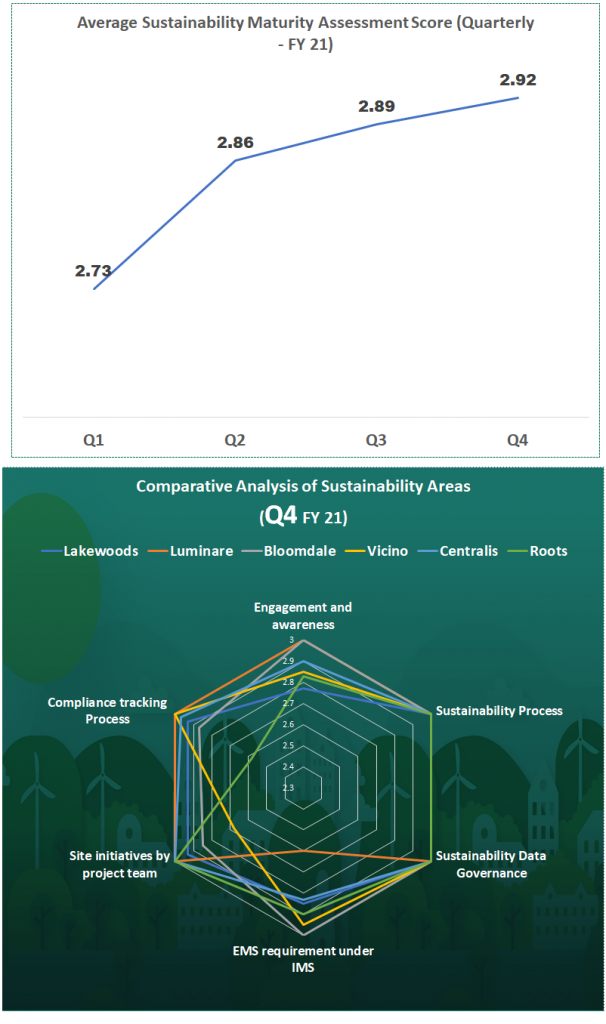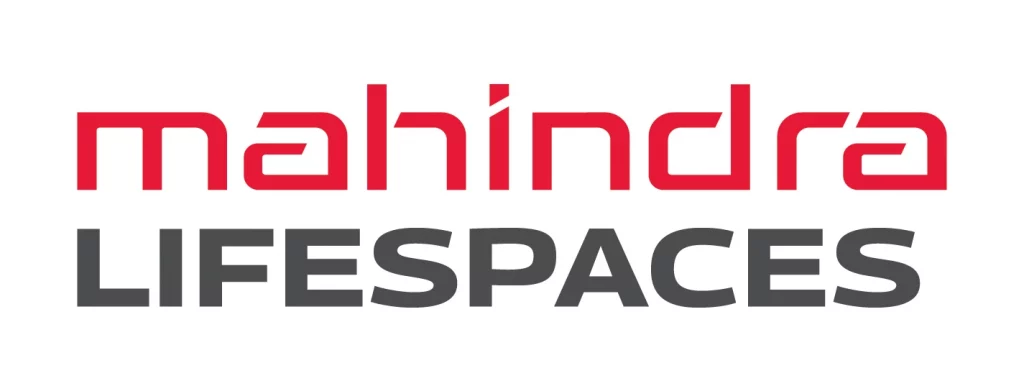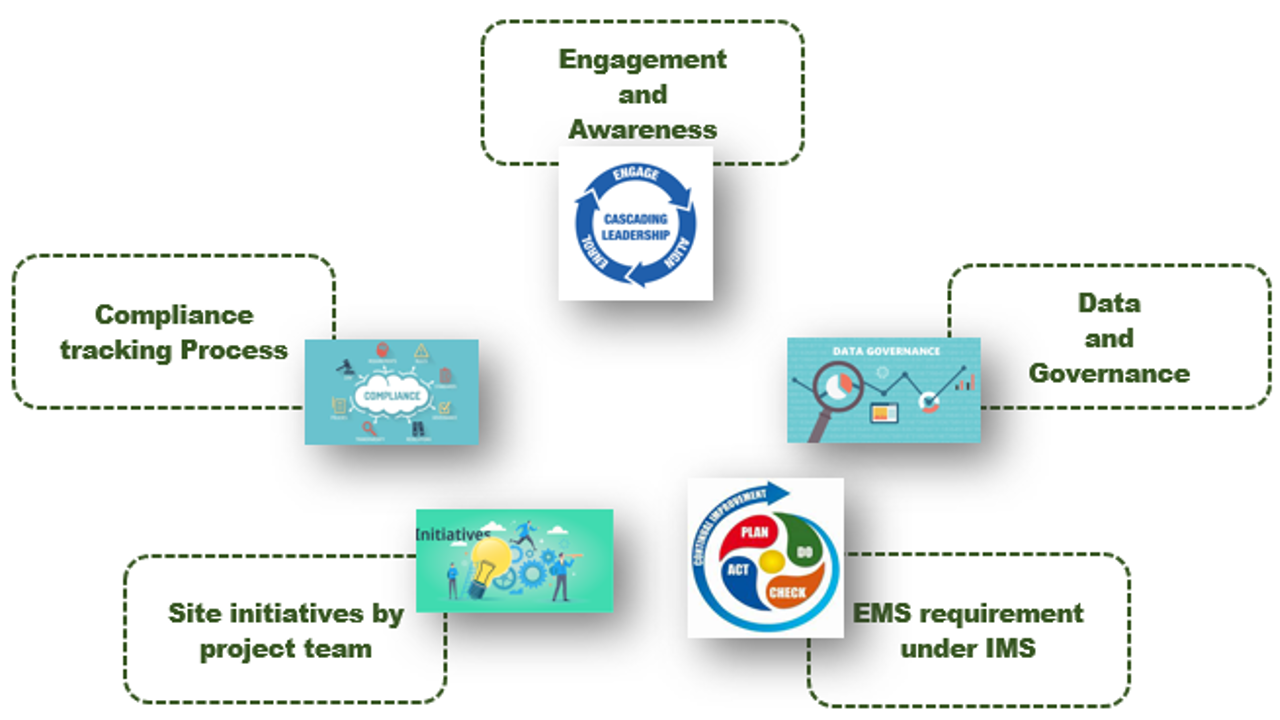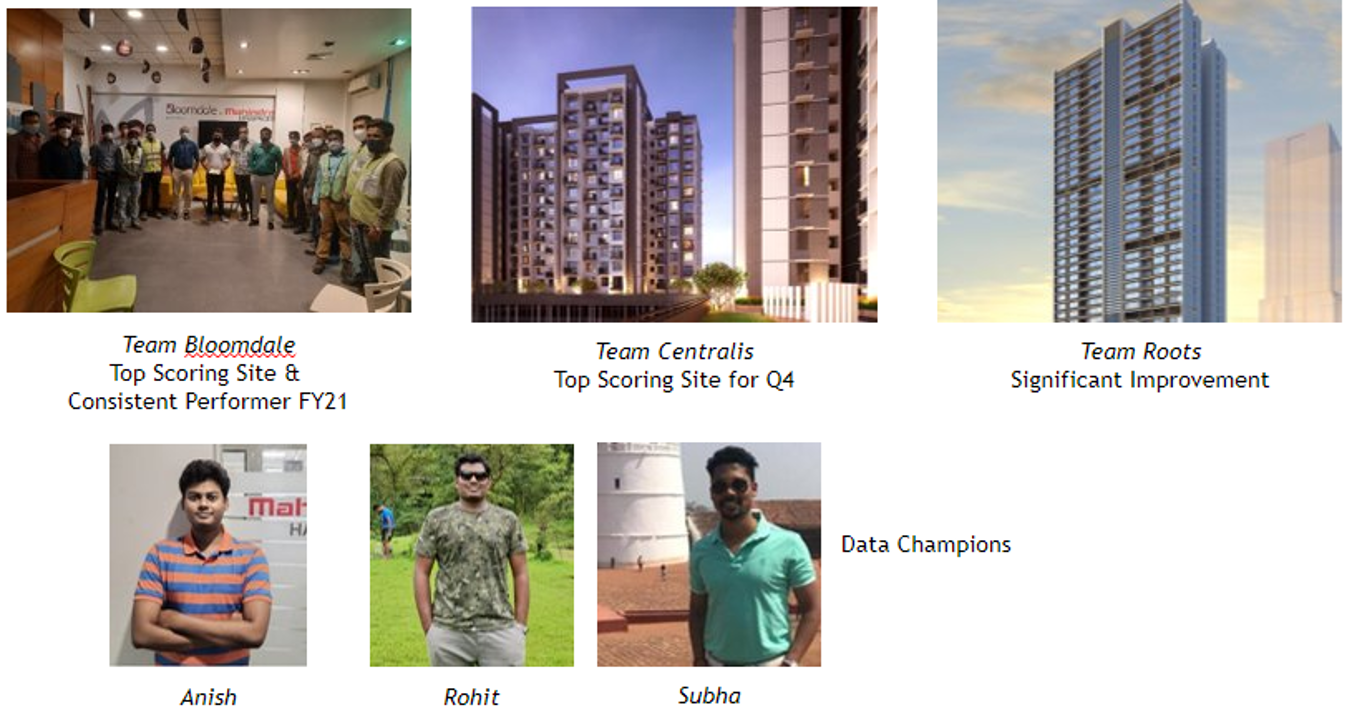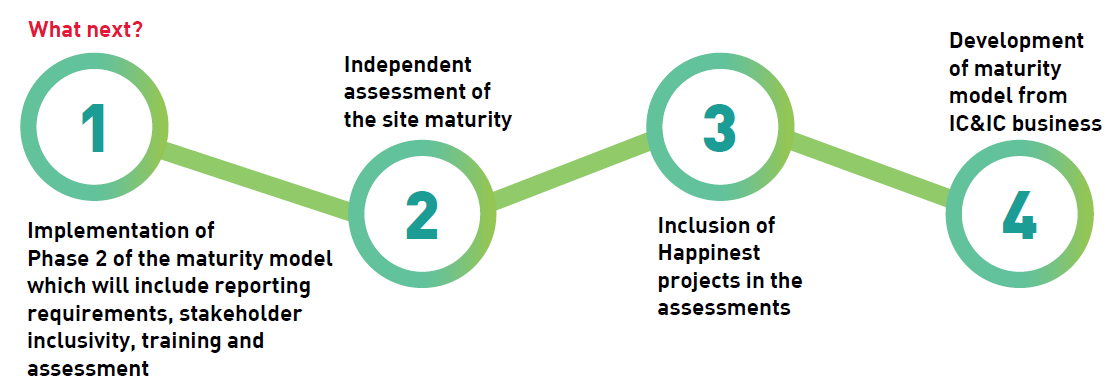
Sustainability at Core
1.1. Site Sustainability Maturity Assessment
For assessing the sustainability measures taken by project sites, Mahindra Lifespaces institutionalised sustainability maturity assessment as a mechanism to engage, improve site sustainability performance which has resulted in improved performance, heightened awareness, and implementation of sustainability initiatives across locations.
Our project sites collect data on the environment with respect to environmental, social, and governance aspects for various public disclosures related to the project for the organization. However, a systematic process to assess the maturity of sites in terms of timeliness, accuracy, effectiveness, and comprehensiveness of overall sustainability processes (such as data collection and reporting, sustainability initiatives, and compliance tracking) was missing. A 'Site Sustainability Maturity Assessment Model' was developed with the long-term goal of 'Elevating the sustainability performance of the project sites to meet the global benchmark and contribute to the sustainable growth of the organization and subsequently accelerate to set new global standards. To achieve this long-term goal, the assessment tool is used to ‘set up uniform processes across all project sites pertaining to Environment Management System and Sustainability'.
1.2. What is Site Sustainability Maturity Assessment?
Site Sustainability Maturity Assessment is a self-assessment scorecard to track the Sustainability Maturity of Project Sites (i.e.; continuous growth) backed by evidences on sustainability performance against the set Goals & Targets through continuous tracking of progress and performance improvement. It provides a one-stop platform for all the project compliance tracking and the bottom-up approach drives integrated thinking and facilitates sustainability-centered decision-making. Project sites are scored on 5 parameters.
The maturity model aimed to assess the effectiveness of existing processes, initiatives, and awareness level of personnel at sites to achieve the sustainability goals of the organization. Based on the self-assessment results and analysis by the Corporate Sustainability function, sites identify opportunities for improvement and establish realistic targets. Best project sites/team members were rewarded on multiple categories basis their yearly performance. With the current objective of establishing uniform processes across all projects, the model will be refined based on global benchmarks (CDP/GRESB).
1.3. Benefits of Site Sustainability Maturity Assessment
With the help of the model, we have been able to build a culture of sustainability across projects. The model introduced across mid-premium and premium project sites created a healthy competition, and knowledge sharing between the projects and helped share best practices and thereby helped set up uniform processes across the projects. Project sites have benefited with better awareness on sustainability vision and mission of the organization, and have significantly improved their data collection process. There has been an increase in the site engagement (within & across) with structured communication on sustainability aspects of the project and organization. Compliance tracking has also become more stringent which has contributed to avoiding non-compliance related penalties. Innovative sustainability ideas and their implementation across projects saw a rise across the projects with initiatives on better waste segregation, automated air monitoring systems, energy and water conservation, use of alternative sustainable materials, reduction of waste, and the likes. As a result, our energy productivity and water productivity increased significantly. We also witnessed better performance during external audits.
